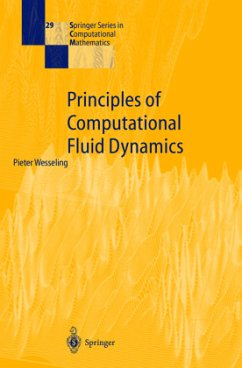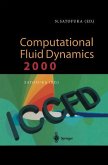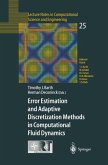This is a softcover reprint of a very popular hardcover edition, published in 1999. An account is given of the state of the art of numerical methods employed in computational fluid dynamics. Numerical principles are treated in detail, using elementary methods. Attention is given to difficulties arising from geometric complexity of the flow domain. Uniform accuracy for singular perturbation problems is studied, pointing the way to accurate computation of flows at high Reynolds number. Unified methods for compressible and incompressible flows are discussed, as well as the shallow-water equations. A basic introduction is given to efficient iterative solution methods.
"This book is a well-written graduate level text in computational fluid dynamics, with a good introduction to the two numerical methods, finite volume and finite difference. The material is well-organized, starting with simple one-dimensional equations and moving to numerical methods for two-dimensional and three-dimensional problems. There is a good mixture of theoretical and computational topics. This text should be of value to all researchers interested in computational fluid dynamics." Mathematical Reviews
"This book is a well-written graduate level text in computational fluid dynamics, with a good introduction to the two numerical methods, finite volume and finite difference. The material is well-organized, starting with simple one-dimensional equations and moving to numerical methods for two-dimensional and three-dimensional problems. There is a good mixture of theoretical and computational topics. This text should be of value to all researchers interested in computational fluid dynamics." Mathematical Reviews
"This book is a well-written graduate level text in computational fluid dynamics. The text begins with a rather thorough discussion and derivation of the equations of fluid dynamics, followed by a review of topics in the theory of partial differential equations. There is a good introduction to the two numerical methods, finite volume and finite difference, that are treated in this text. The material is well-organized, starting with simple one-dimensional equations and moving to numerical methods for two-dimensional and three-dimensional problems. Grids are treated in some detail. In addition to simple colocated grids, there is discussion of non-uniform, staggered, and unstructured grids. There is a good mixture of theoretical and computational topics. This text should be of value to all researchers interested in computational fluid dynamics." -- MATHEMATICAL REVIEWS








